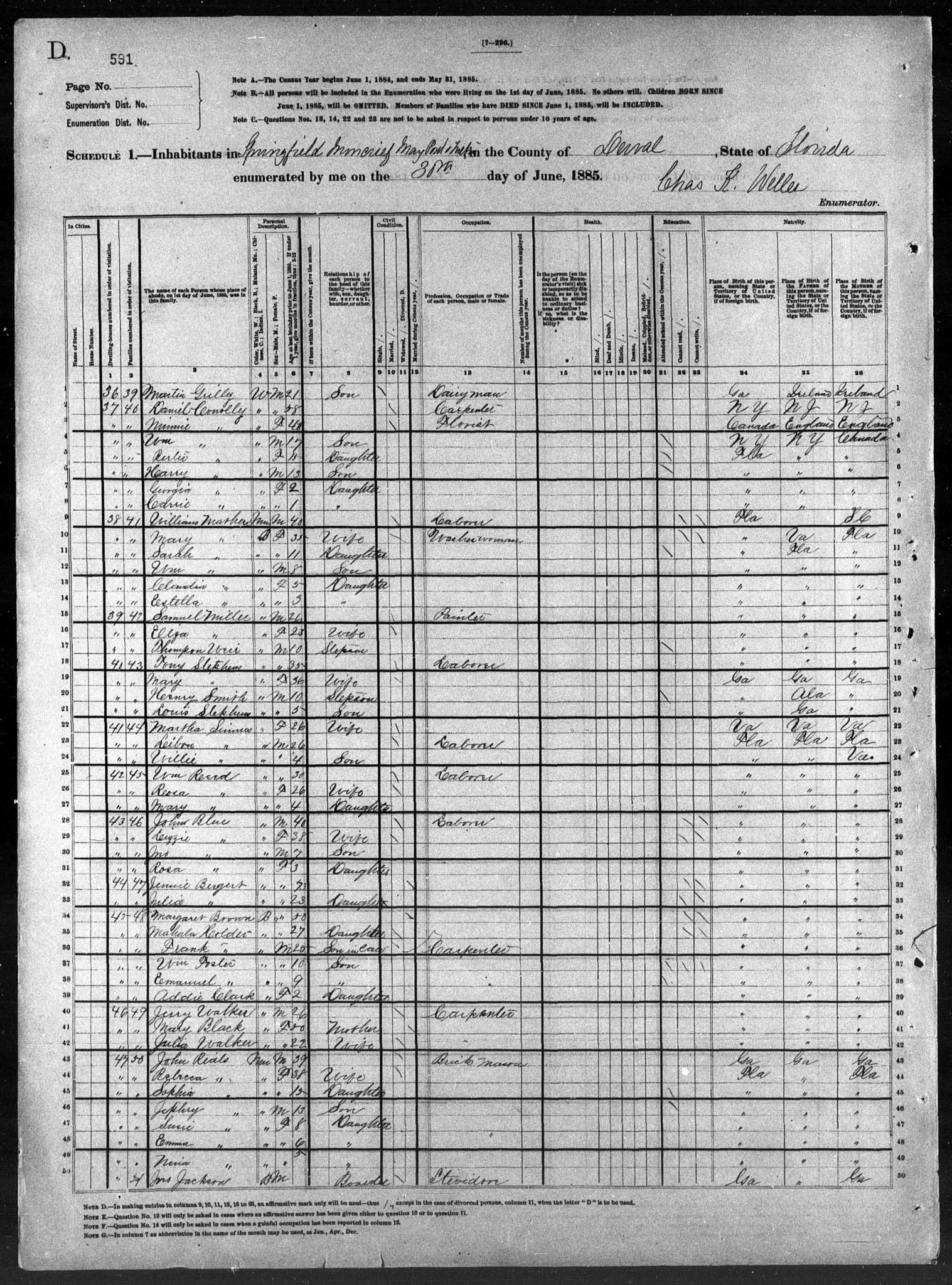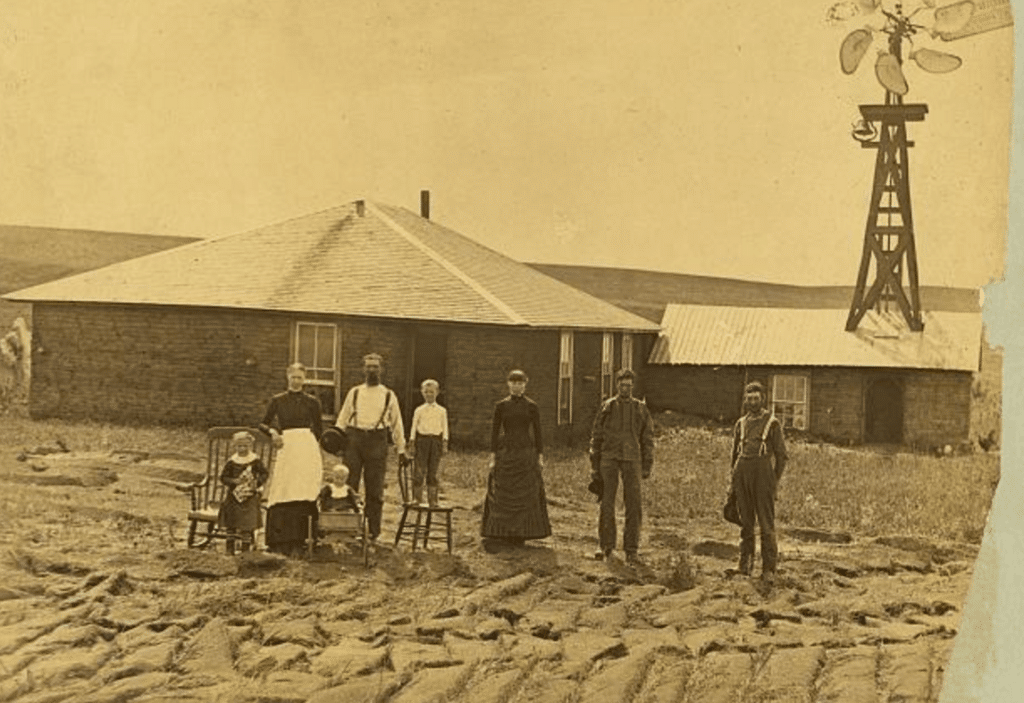Census and population records have long been a vital component of genealogy research. Those of us researching the U.S. have come to count on the decennial federal census to provide a generous amount of information about our ancestors, even if it is not always as accurate as we’d like.
And (aside from the 1890 census that was destroyed in an unfortunate and somewhat mysterious series of events) these records are easily accessible online and widely used. But there is federal census that most family historians have never even heard of, and it happens to provide information on a key period of time in America’s history.
In 1879 the U.S. government asked states to take a semi-decennial census in 1885 – in addition to the upcoming 1880 and 1890 censuses – with the promise that they would cover 50% of the costs of the undertaking.
The states of Nebraska, Florida and Colorado completed the request, along with the territories of New Mexico and Dakota. These census schedules include a wealth of information for those who may have had ancestors in those regions in 1885 and are one way to overcome the gap left by the 1890 census.
Here’s a look at an 1885 census schedule from Florida to give you an idea of what is included. The other states and territories who conducted these federally requested schedules used the same form seen below, providing consistency from region to region.

The great news is that these schedules are available free online. We’ve included a link for each state and territory collection below so that you will have easy access to these valuable records.
- Colorado State Census 1885
- Nebraska State Census 1885
- Florida State Census 1885
- New Mexico Territorial Census 1885
- Dakota Territory, Northern portion, 1885 Census This is an Ancestry paid collection. The records are not available online for free.
- Dakota Territory, Southern portion, 1885 Census This is an Ancestry paid collection. The records are not available online for free.
- You can also search the Dakota Territory records online and order a copy from the North Dakota State University here.
Mortality Schedules for the 1885 Federal Census
In addition to the population schedules that were conducted in 1885, mortality schedules were also completed and can be (in some cases) found with the populations schedules in the collections above. You can also find a detailed index of the mortality schedules online for free via Ancestry (actual record access comes at a cost). Get the details about what these records are and how to access them here.
Other 1885 State Census Options
Other states also conducted a state census in 1885, such as Minnesota, but these were not federally funded and the forms used (and information included) were not consistent from state to state. Despite this, they provide a highly valuable resource for family historians. You can find most of them online for free via FamilySearch by visiting this page and searching for 1885 or State Census 1885. You can read more about state census records here.
You can also learn more about the 1885 Federal Census in Prologue Magazine from the National Archives.
For more information on overcoming the gap left by the 1890 Census check out these helpful articles:
The Ultimate Quick Reference Guide to the U.S. Census for Genealogy
Thousands of 1890 Census Records DO Still Exist: Here’s How to Find Them for Free
This Underused Resource May Have the Family History Details You’ve Been Looking For
Image: Coburg, Nebraska Territory, 1884 or 1885, Library of Congress
By Melanie May0, Family History Daily Editor

I am looking for a Christian Shannon born in 1874 or 1875 in Calafornia
Census records: Having a hard time locating records for gr-grandfather. came to the U.S. 1872 was in Chicago Illnios until 1900 then moved to North Dakota where I found Richard and family living there. These are only census records I can find them. Does anyone have any ideas where I can look?
Great reading on 18 Nov. 2020.. — of Covid stay at home in Marshfield WI…suggesting this 81 yr old retired 2nd grade teacher do so.. and am depending on family for supplies..
Hi There!
Kansas also took an 1885 census; it is the first census my Rosiere family (my last immigrant family) were recorded in as they came over in 1880 after the Federal census was taken for that year. The Kansas census has the distinction of being the first actual record I ever found as a genealogist!
Iowa conducted a state census in 1885 also.
Should not it say “Part of” 1885 census is free….or is it click bait?
Hi Thomas,
Thanks for your feedback. The census of 1885 was requested and partially funded by the federal government and is therefore considered a Federal Census – even though only a small number of states took part. This differs from state censuses that were organized and funded at the state level. Please read the following article from the National Archives for more information: https://www.archives.gov/publications/prologue/2008/fall/1885-census.html
Minnesota has a 1885 state Census listed in Ancestry. May be online too. I copied mine at MN Historical Society years ago. I also copied what is called an “Agricultural Census for 1880” at MHS. MISSING VERY TOP
Schedule 2 Production of Agriculture in town in the County of county in the State of state .
I am guessing that it may have been a Federal Census since the state is to be listed.
Since I had ancestors that were here and farming at the time I found it very interesting. Very much information. How much land, the value, how much wooded. Production of every thing including chickens & eggs. How much live stock. Even how many apples from apple trees. My copy’s are very hard to read but machines are much better at MHS now. I had two families of Homesteaders in my family. Was interesting to see what they had accomplished in 10 years.
It wasn’t a federal census so you should rename the title. Based on the very small number of states that took up the offer, it was far from federal. Even if you throw in the states that were doing a 1885 census separately, it wouldn’t be a federal census so please stop calling it one.
This census is great resource for maiden names of married women since it lists father’s names of census participants.